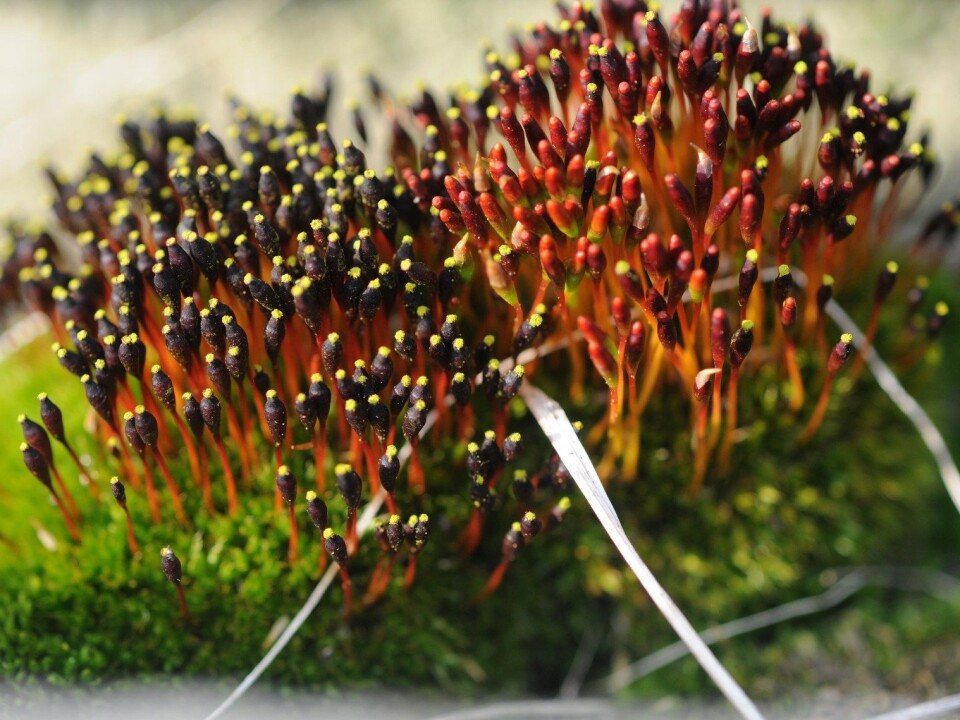
Lemmings’ loss is bounty for moss
After a prolific lemming year their corpses can be found strewn around the mountains and woods. This is good news for mosses that have specialised in getting nutrients from these dead rodents.
Denne artikkelen er over ti år gammel og kan inneholde utdatert informasjon.
A so-called lemming year tends to follow a cold and snowy winter.
This is because the small rodents breed prodigiously beneath a good layer of insulating snow. When it melts they appear in numbers.
Lemming years provide feasts for predators and many species wait until they can rely on this food supply before having their own offspring.
But in barren areas of the far north and higher altitudes further south food for lemmings is pretty scanty. When freezing weather returns in the autumn the lemmings perish even if they aren’t devoured by predators.

This is where the black fruited stink mosses enter the scene. They belong to a moss family that has specialized in getting nutrients from carrrion and animal droppings. One member of the family, Tetraplodon, is called “lemming moss” in Norwegian.
Interplay with flies
“We who study mosses know that after a lemming year we can expect to find many more interesting lemming and carrion mosses,” says Tommy Prestø, who manages the rock garden and biological station at Kongsvoll, run by the Trondheim Science Museum.
These mosses aren’t carnivorous, nor do they have any traps or sticky mechanisms that attract or attach to animals. The moss is of course sedentary plant and can’t search around for dead rodents. But it solves these challenges with the help of flies and other insects.
Contrary to most other moss species, the black fruited stink moss doesn’t release spores into the wind. They’ve developed strong colours and scents that entice blowflies and other insects that are attracted to carcasses.
“These moss species use flies in the same way catkins or pussy willows attract bumblebees in the spring –the flies move from one moss to another and contribute to the spreading of spores, also to new dead rodents,” says Prestø.
He explains that if these mosses depended on winds to spread their spores the chances of these landing on a dead lemming would be minimal. Lemming year or not, dead lemming don’t take up much territory.
Nitrogen and phosphorus
Prestø asserts the intricate system is the result of long-term evolution.
“Arctic and alpine areas are extremely lacking in nutrients and through eons of evolution these mosses have found a way of getting their nitrogen and phosphorus.”
Nitrogen and phosphorus are completely essential for plants.
“Dead rodents all over the mountains are concentrated sources of these elements, found in their bones and meat,” he says.
Versatile mosses
Prestø says that several kinds of moss in Norway can gain from dead lemmings, but only the carion moss Aplodon wormskioldii actually has the lemming as its prime source of nutrients.
When there are no lifeless lemmings around, the moss also lives on other small rodents, reindeer antlers and various animal droppings.
There are five species in this stink moss family in Norway. Two of them live on reindeer droppings, whereas the others live on carcasses and excrement.
“Following a lemming year, as the lemmings are lying strewn about and decomposing, we can expect a spread of these mosses,” says Prestø.
Translated by: Glenn Ostling






























